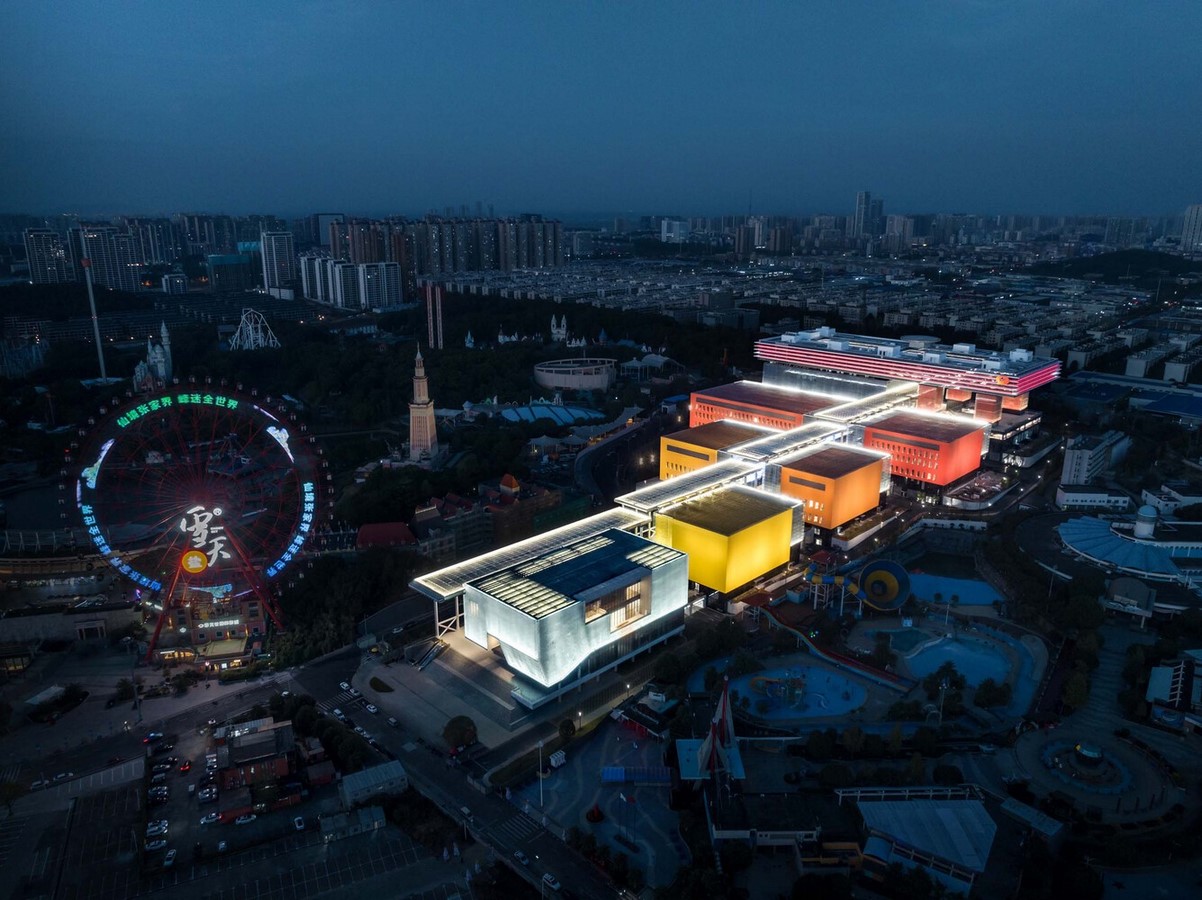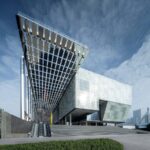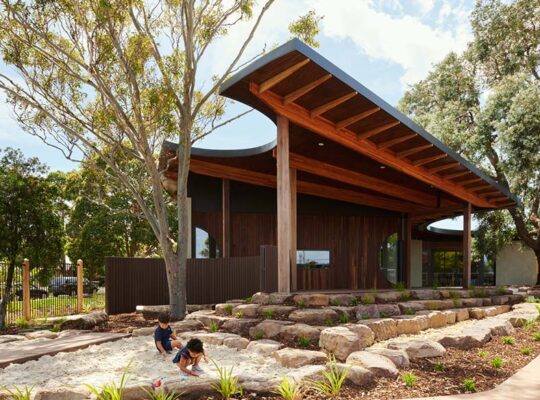Introduction
In November 2022, the China Jinying TV Art Festival showcased the grand opening of the Hunan Broadcasting System (HBS) Program Production Centre in Changsha, Hunan Province. Designed by HPP Architects, this state-of-the-art facility marks a significant milestone as the largest TV program production center in Hunan and a beacon of cultural creativity in the Malanshan Cultural and Creative Area.

Contextual Integration
Situated amidst the vibrant landscape of Changsha, the HBS Program Production Centre spans approximately 7.3 hectares, boasting a total GFA of 230,000 m2. Embracing the concept of “One Axis with Multiple Centers,” the center harmonizes with its surroundings, offering a blend of large-scale performances, film and TV production, art exhibitions, and interactive visitor experiences.

Innovative Design Approach
Inspired by the notion of “Colorful Boxes,” the architectural design features a series of dynamic studio spaces and an art gallery, each adorned with vibrant hues symbolizing the youthful energy of HBS. The layout encourages flexibility and collaboration, allowing for seamless integration between different program productions while maintaining a distinct identity for each studio.

Central Axis Connectivity
At the heart of the center lies a 400-meter-long central axis, serving as a covered plaza for public gatherings and outdoor recording. Topped with a double-layered roof, the axis offers unobstructed views and ample space for public activities, fostering engagement and interaction among visitors and staff alike.

Elevated Office Experience
Elevating the office experience to new heights, the Program Production Centre features a floating office building supported by eight columns, offering panoramic views of the surrounding landscape. This innovative design not only enhances productivity but also serves as a symbolic gateway to Changsha City from the east.

Future Outlook
As a pioneering force in the film-television industry, the HBS Program Production Centre embodies openness, innovation, and inclusivity. By bridging the gap between spectators and production areas, it creates a dynamic platform for interaction, creativity, and cultural exchange, shaping the future of entertainment in China.

























